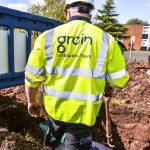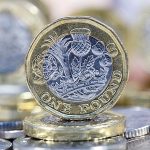Chancellor Targets Full Fibre for Majority of UK Premises by 2025 UPDATE3
The Government’s Chancellor of the Exchequer, Philip Hammond MP, has this afternoon surprised and confused in equal measure by announcing that he wants to see the “majority” of UK homes and businesses being reached by Gigabit capable “full fibre” (FTTP/H) broadband ISP networks by the end of 2025.
The confusion aspect stems from the fact that in the very same paragraph Hammond has defined “majority” as 15 million premises, which if we exclude the potential for overbuild (i.e. rivals building FTTP/H in some of the same locations) in predominantly urban areas is still likely to be a touch shy of 50% coverage (not a majority) and if we consider that overbuild is a potential factor then it could be a bit further south of that ambition.
Previously the current Conservative government had only pledged to reach 10 million premises with ultrafast Fibre-to-the-Premises (FTTP/H) technology by the end of 2022 (here) and nearly all of that will be delivered by the commercial market (e.g. Openreach, Virgin Media, Hyperoptic, Cityfibre etc.). See our ‘UK Summary of Full Fibre Broadband Plans and Investment‘ for an outline of who is doing what, when and how.
Advertisement
Similarly at this point no additional public investment is being promised for the new goal and the commercial market already looks set to reach a similar number of premises via existing strategies by 2025. Currently the coverage is roughly 1.2 million premises (roughly 4% of the UK) but this is rapidly ramping up (details), thanks to major investment(s) in the technology. Sadly we’re still way behind most of the EU on this (here).
Philip Hammond MP, Chancellor, said (CBI Speech):
“Full fibre networks are faster, more reliable, and more affordable to operate than their copper predecessors.
Over a million premises already have direct access to them, but if we are to achieve our ambition of a truly high-speed economy, and keep up with our competitors, then we need a step change in our approach.
So this evening I will set a target to see full-fibre connections being available to 15 million premises, that’s the majority of homes and businesses, by 2025. This is ambitious and it will require industry to connect more than two million additional premises a year for the next seven years.
We won’t do that by government diktat. We will do it by creating the conditions for the market to deliver and we will use all the tools at the government’s disposal to ensure that target is met.
And we’ll go further, by committing to finish the job – and deliver a nationwide full-fibre to the premises network by 2033. Running both copper and fibre networks indefinitely will not benefit either the consumer or the industry, so we must start thinking now about that switchover and how to sharpen the incentives for industry to move customers away from copper and on to fibre.”
Carolyn Fairbairn, CBI Director-General, said:
“There has never been a more important time for Britain to harness the power of good business and good government. Firms have led the way on ideas to lift the UK’s productivity and spread great technology through British firms of all sizes – and now government is helping transform these ideas into action.
The UK’s digital infrastructure is the backbone of our future success, so businesses will warmly welcome the Chancellor’s commitment to widen full fibre broadband access, which will ensure the UK remains competitive as the pace of technologies change.”
In fairness the combination of Ofcom’s recent regulatory changes (making it easier to access Openreach’s existing cable ducts and a simpler electronic communications code etc.) and additional support from the government, such as via their 5 year business rates holiday on new fibre and several large investment funds or Gigabit voucher schemes, has certainly helped to push FTTP/H forward after a painfully slow start.
The Government’s forthcoming Telecoms Infrastructure Review, which is due to publish some early proposals this summer 2018, is now looking at what other changes or tweaks to the existing market could be made in order to further accelerate the rollout of true fibre optic broadband services across the United Kingdom.
We hope that the new review will work to tackle some difficult regulatory challenges, such as wayleaves and the complex question of shifting consumers from copper to optical fibre lines without upsetting those ISPs that have invested heavily in older copper networks (e.g. TalkTalk and Sky Broadband). Equally it will be important not to damage the existing progress being made by new alternative network providers (AltNets).
Advertisement
In closing, Hammond said that if everything goes well then “all” UK premises could be reached by a full fibre network come 2033, although going much beyond the 50% coverage mark may well require many billions more in public investment and of course delivery on this would be the challenge for a different government in the future. Different governments may have different plans.
UPDATE 8:37pm
A comment from Cityfibre has just come in.
Greg Mesch, Founder and CEO of CityFibre, said:
“The Chancellor’s announcement of more ambitious full fibre roll-out targets underlines more than ever the need to end the UK’s “make do and mend” approach to digital infrastructure: copper is dead. It is time to focus on building the future-proof full fibre networks that will underpin the UK’s economy for generations to come.
For this ambition to be realised, the Government and Ofcom must now rapidly set out a clear plan to lessen the country’s reliance on Openreach and harness the momentum and major investment being made by new entrants.”
UPDATE 23rd May 2018
Advertisement
A couple of extra comments dropped while we lay sleeping.
Tom Mockridge, CEO of Virgin Media, said:
“The Government’s ambition declared tonight at the CBI annual dinner for 15m FTTP by 2025 is a total mirage unless it takes effective action to liberalise property wayleave laws to allow new ducts to be constructed to carry fibre and requires BT to open up its existing ducts to new entrants. To-date the Government has done nothing effective on either of these fronts. FTTP can be deployed without Government subsidy. The major barrier to it is centuries’ old restrictions. Time to change”
Clive Selley, CEO of Openreach, said:
“We share the Chancellor’s full fibre vision for Britain. This year we’ll double our FTTP footprint and by 2020, we will have built to 3 million homes across the UK. We want to reach 10m premises by the mid-2020s, and believe we can ultimately fully-fibre the majority of the UK under the right conditions.”
Matthew Hare, CEO of Gigaclear, said:
“The Chancellor’s announcement is welcome news and addresses our calls for a national, full fibre plan, which is desperately needed to secure our future economic growth. However, we must not underestimate the sheer scale of the challenge.
Gigaclear is accelerating its commitment in pioneering the delivery of world class, ultrafast connectivity in rural locations and we can move even faster if the practical barriers that restrict the roll out of new full fibre networks are addressed.
It is only then that we will start to see full fibre broadband delivered on a truly national scale to every home and business. Gigaclear looks forward to seeing the detail behind this ambitious objective and will work with the Government to achieve a full fibre Britain.”
UPDATE 4:54pm
The body representing altnet ISPs, INCA, has just issued a statement.
Malcolm Corbett, INCA CEO, said:
“There is no reason why most of the UK cannot be served by full fibre and our members are fully supportive of making this happen.
However, there are steps that need to be taken in order to make Philip Hammond’s goal a realistic one. For one, we need to see more collaboration between the industry’s big players, such as BT Openreach and Virgin Media, and the altnets, to enable a future-proof digital infrastructure to be built quickly.
We have no doubt that there is investment available to deliver future-proof connectivity across Britain but there are many challenges and barriers to digital transformation. The Government can help a lot by taking a more co-ordinated approach between departments involved with local government, planning, transport and utilities.”
Mark is a professional technology writer, IT consultant and computer engineer from Dorset (England), he also founded ISPreview in 1999 and enjoys analysing the latest telecoms and broadband developments. Find me on X (Twitter), Mastodon, Facebook, BlueSky, Threads.net and Linkedin.
« Ofcom UK Finds Fault with Virgin Media Contract Termination Charges

















































Comments are closed